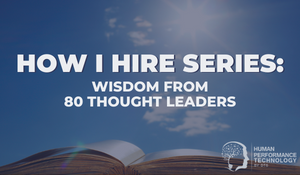In a Nutshell: The 80-20 Rule (Pareto Principle)
The 80/20 rule or Pareto principle is named after Italian economist Vilfredo Pareto, who discovered in the early 1900s that (among other things) 80% of the income and wealth in Italy was owned by 20% of the population.The term was coined by engineer and business consultant Joseph M. Juran who found a parallel between Pareto’s research and his own work in quality control (for instance, the distribution of accidents among hazardous processes). Juran published the” Quality Control Handbook” in 1951, which first describes “Pareto’s principle of unequal distribution.”
IBM also helped to popularise the Pareto principle in the 60s and 70s through their training of employees, having discovered that 80% of a computer’s time is spent executing 20% of its operating code, which they made more efficient and user-friendly as a result, thus making IBM’s computers much better than their competitors.
Overview:
The 80/20 rule is a typical pattern that has been observed in a number of business and non-business environments, which suggests that about 80% of effects, results or rewards flow from 20% of causes, factors or groups.
The Pareto principle has many applications, but probably one of the most well known is the rule of thumb in sales: "80% of your sales revenue comes from 20% of your clients."
Other examples include:
- 80% of what you achieve in your job comes from 20% of the time spent
- 80% of a company's sales come from 20% of its products
- 80% of a company's complaints come from 20% of its customers
"The 80/20 Principle" (1999) is a well known book dedicated to the topic by Richard Koch. The Pareto principle was also discussed by Tim Ferriss in his bestselling book "The 4-Hour Workweek" (2009). Ferriss said the formula helped him realise that the majority of his time was being taken up by a small number of customers who weren’t worth the financial output and recommends “firing” these customers.
The essence of the 80/20 rule is captured by the following quote by Joseph Rickaby: “A great man is one who seizes the vital issue in a complex question, what we might call the jugular vein of the whole organism, and spends his energies upon that.” The flip side of the rule proposes that it is just as important to know what to NOT spend time doing, which is captured by the following Peter Drucker quote: “There is nothing so useless as doing efficiently that which should not be done at all.”
Author Josh Kauffman even advises his clients to create a “not-to-do” list, which is essentially a list of low-value activities or requests that are identified ahead of time, so that if they come up during the day it will be much easier to say no to them.
In summary, companies, teams, and individuals can use Pareto’s insight to understand that a minority of efforts lead to a majority of results. By investigating those things that have the most powerful impact on sales and performance, employees can direct their time, effort and resources towards the right activities. They can then ignore, automate, delegate or delete those tasks that do not yield a sufficient return on investment.
Sources:
- The 80/20 Principle: The Secret to Achieving More with Less (1999), Richard Koch
- 80/20 Sales and Marketing: The Definitive Guide to Working Less and Making More (2013) by Perry Marshall
- Pareto Principle: How To Use It To Dramatically Grow Your Business, Forbes, Dave Lavinsky, 2014
- The 80/20 Rule of Time Management: Stop Wasting Your Time, 2013
- The 80/20 Principle - Richard Koch (Joshkaufman.net/8020-principle)
This article offers an expanded description of the summary listed in our post 40 Must-Know HR, OD, L&D Models.

Theo Winter
Client Services Manager, Writer & Researcher. Theo is one of the youngest professionals in the world to earn an accreditation in TTI Success Insight's suite of psychometric assessments. For more than a decade, he worked with hundreds of HR, L&D and OD professionals and consultants to improve engagement, performance and emotional intelligence of leaders and their teams. He authored the book "40 Must-Know Business Models for People Leaders."


.png?width=374&name=Nutshell%20-%20Intrinsic%20Motivation%20(Autonomy%2c%20Mastery%2c%20Purpose).png)
We Would Like to Hear From You (0 Comments)